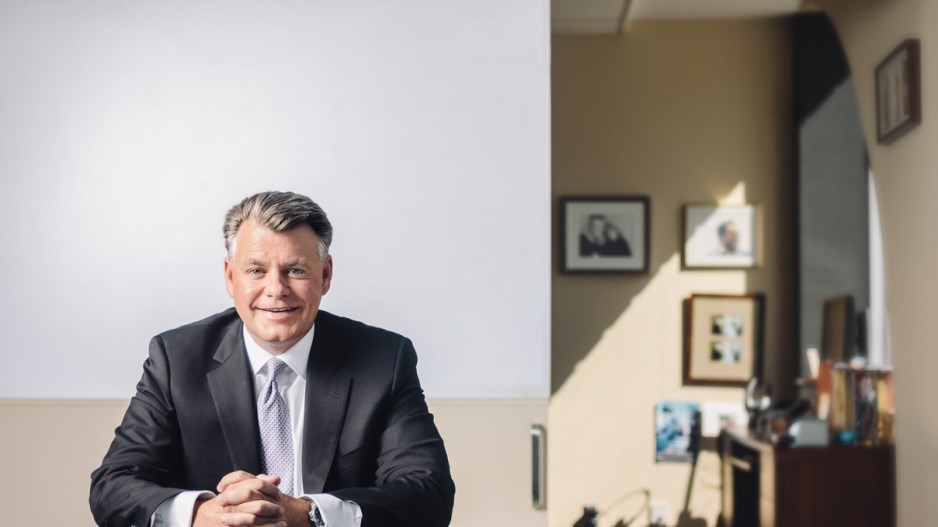As an entrepreneur who lives and breathes philanthropy, I always find it interesting how Canadians view this essential part of our society.
Canadians tend to view themselves as a generous people. We’re known for our friendliness, our inclusiveness and our sense of social responsibility. So it doesn’t surprise me that, in my day-to-day interactions with people, there’s a general view that philanthropy is growing. People are giving more.
In the media, we often see huge gifts by well-known philanthropists. Gerry Schwartz and Heather Reisman, for example, recently announced a $100 million gift to the University of Toronto – the largest donation in the school’s history. Peter Gilgan, another noted philanthropist, also cut a cheque for $100 million this year to the Hospital for Sick Children.
And internationally, when tragedy strikes, it seems as if the whole world is mobilizing to assist, as with the recent blaze at the Notre-Dame cathedral in Paris or the catastrophic hurricane that hit Abaco and Grand Bahama in the Bahamas this past September.
These awful tragedies and reports in the media of large gifts can be deceiving – philanthropy is growing, and Canadians must be giving more, too.
But the reality is quite different.
While the needs of society are bigger than ever, giving in Canada has actually been going down when you consider the total number of Canadians who donate each year. According to the latest Giving Report, assembled annually by CanadaHelps using data from Statistics Canada, the number of Canadian tax filers giving back has eroded significantly over the years. In fact, from 2006 to 2015, the number of donors across every age group declined by between four and six per cent.
“With both donation rates and donation amounts dropping, a dangerous trend for the charitable sector has emerged,” the report states.
I couldn’t agree more.
There are many reasons why giving is in decline. I think it’s harder than ever for the lower and middle class to make ends meet. The cost of living continues to rise. Meanwhile, through technology and social media, our culture has never been more obsessed with consumerism. We all want that amazing holiday or the latest gadget. We all desire that Instagram lifestyle, and at the end of the day, there just isn’t enough on the table to give back.
Also, many donors have become increasingly savvy and proactive in their giving. They want maximum impact, transparency and the knowledge that their hard-earned dollars are being invested and applied with the same care and attention given to their retirement savings.
That’s where I come in, and what we do at The Foundation (WCPD).
While giving might be down across the population, my work with Canada’s top donors shows that we are now in a golden age of philanthropy.
Gerry Schwartz, Heather Reisman and Peter Gilgan are not alone. Canada’s wealthiest people want to give back and create the maximum possible impact, knowing that their gift will go straight to where it is needed most.
Since 2006, our firm has been dedicated to helping our high-net-worth clients give more through philanthropic tax planning, using flow-through shares. This tried-and-true method of giving is simple, combining two tax policies that are older than your RRSP: one to assist Canada’s resource sector to create jobs and produce the raw materials we need in society, and another to give Canadians a tax break for donations to charity (your conventional tax receipt). When you combine these two policies, our clients can, on average, give up to three times more to charity, at no additional cost.
It is a method that has become so popular among Canada’s top donors that we often have a waiting list of philanthropists who want to use this structure.
This golden age of philanthropy is further evidenced by the Giving Pledge.
Founded by Warren Buffett and Bill Gates, this pledge encourages the world’s richest people to give away the majority of their wealth to philanthropic causes. As of today, more than 200 people have signed it, representing some $500 billion in donations. In my experience, as a member of Tiger 21, an investment club, I’ve seen this evolution in our meetings. Whereas in the past we would discuss our investments, and what we made, now there is a new question: what did you give?
Philanthropy has become a lifestyle. Gone are the days of just writing a cheque or leaving money aside when you die.
Today’s philanthropists are active, interested in social causes and treating their donations like another business. For some, if they have been fortunate to make millions or billions of dollars, they are asking: what’s next? Rather than being paid in cash, they are paid in purpose, by making a difference in the world in a way that touches their heart.
We live in a time of complex problems. Climate change is and will continue to be a major issue for Canada and the world. Meanwhile, income inequality – the division between the rich and poor – is growing every day.
There are so many needs, charities and social causes out there – and they all deserve attention.
In a world where most people are giving less, it is our job to support and encourage those most fortunate in society to not only give more, but also laser dollars to where it is needed most if we are to effectively tackle the big problems of the 21st century.
For decades, Peter Nicholson has been a recognized leader in Canadian tax-assisted investments, with a specialized focus on philanthropic tax planning and tax reduction. Through his work with countless donors, foundations, institutions and boards, he has helped generate in excess of $125 million for client donations. To learn more about The Foundation (WCPD) and how it can assist in your philanthropic goals, write [email protected] .




